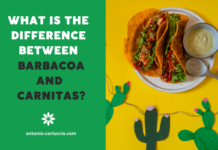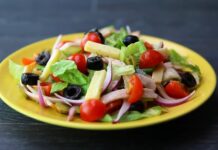
Food is an important part of any person’s life since it is essential to keep living and staying healthy. However, it is also significant for several other reasons. It is a staple of any holiday, celebration, or event and delicious food can actually make individuals feel happy and excited.
When it comes to Jewish cuisine, it is difficult to give it a single definition since it has been under the influence of the many countries Jews have lived in. And although certain dishes were not so different from their gentile (non-Jewish) counterparts, over time they have developed their uniqueness and style that perfectly reflects the migratory patterns of the community. There are many examples on kosher.com you can explore.
Today, the cuisine is extremely versatile, interesting and on the rise in popularity while still following the dietary laws of Jews. So if you are curious about what it is exactly, here are some of the most popular dishes you can try.
Different Cuisine Types
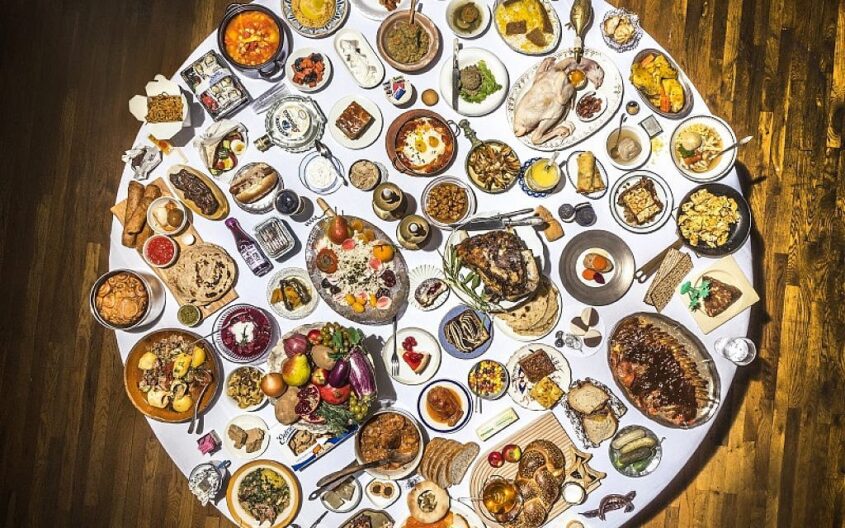
Ashkenazic – In the past Ashkenazi Jews were very poor which is something that is also reflected in their food. Firstly based in Germany before migrating to countries such as Russia and Poland, their food is the one best known by Americans and includes dishes such as borscht, bagels, and knishes. Today, Ashkenazim greatly outnumber Sephardic Jews since they make up more than 80% of all Jews worldwide.
Sephardic – Includes delicacies that are eaten by North African, Mediterranean, Indian, and Middle Eastern Jews whose dishes greatly reflect the customs of these cultures. Since during the early Middle Ages, the culture and economy of Jews living in Islamic lands flourished, this is something greatly noticeable in the quality and presentation of their foods.
Israeli – Eating in Israel can be quite a unique experience even though many argue that the country has yet to develop its own cuisine. The most common and typical foods you will find include Israeli salad, falafel, and hummus.
Classic Foods Everyone Should Try
-
Matzah Balls
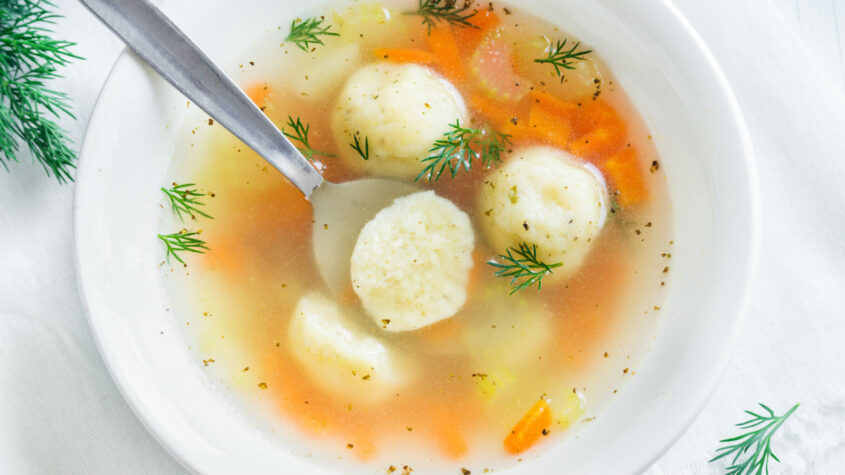
Ashkenazim make these dumplings from beaten eggs, chicken fat, water, and matzah meal and traditionally serve them in soups. This delicious soup is one of the staples on Passover, one of the biggest holidays.
Denser matzoh balls will have a strong taste of the ingredient itself while lighter ones will have a more chicken broth flavor. However, homemade matzah balls are far superior and richer in taste as compared to ones bought in stores. Today, one can even make vegetarian, vegan, and gluten-free versions.
-
Challah

This braided type of bread is typically eaten on Shabbat, major holidays, and on other ceremonial occasions. The bread’s crust is crispy and golden while it is extremely fluffy on the inside.
For those unfamiliar with Shabbat, also known as Sabbath, it is a day of rest that commences every Friday from sundown to Saturday night. It begins with a blessing over a cup of wine. It is known as Kiddush and is a special cup that is only used for this purpose. If you are interested in learning more about it, you can visit this website.
-
Kugel

Another dish served on Shabbat, it is a type of casserole or baked pudding with egg noodles or potatoes as the main ingredients. For a salty taste, one would use potatoes, since the noodle dish uses a lot of sugar, essentially providing an extremely sweet flavor. Some people even like to use sweet potatoes instead of regular ones and also add raisins or cinnamon into the casserole.
-
Shakshouka

Shakshouka is an egg dish dipped in tomato sauce, garlic, and chili peppers. To add flavor it contains commonly used spices such as paprika, nutmeg, cumin, and cayenne pepper. Typically it is served as a breakfast food that goes well with warm challah, but it can also be served at dinner as a side dish.
-
Borekas

These flaky pastry pouches are usually fried and can be filled with cheese, spinach, or potatoes. People who like experimenting also make ones with onions and lentils or with a beef stuffing. Borekas are extremely popular as Israeli street food and the sambusak (borekas with beef) is especially popular in Syria.
-
Bazargan
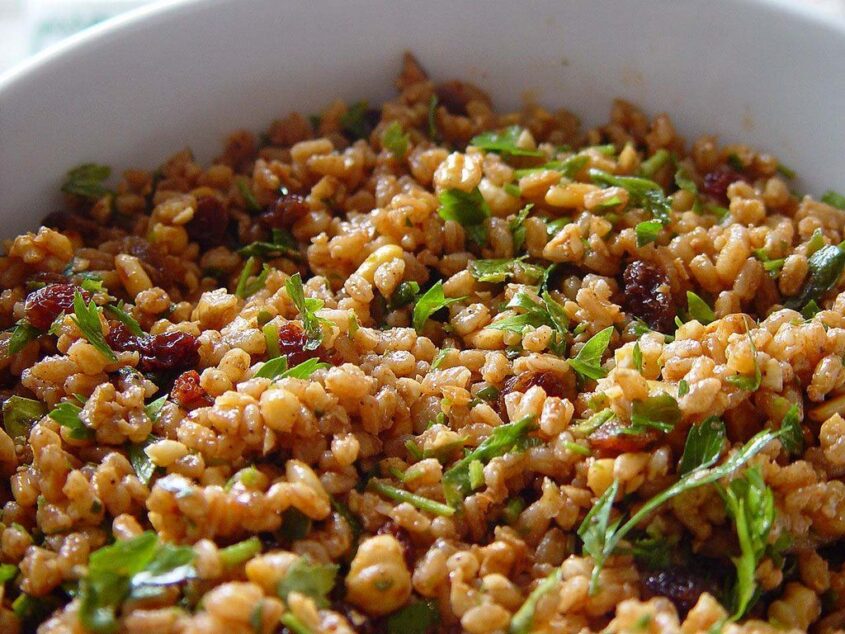
This bulgur wheat salad is sweet and savory and a perfect vegetarian dish. It needs to be prepared in advance so that the flavors can perfectly blend and lose a bit of the primary sharpness in taste. It is great as both a breakfast and lunch food and usually contains ingredients such as walnuts, pomegranate, and a huge amount of various spices.
-
Brisket
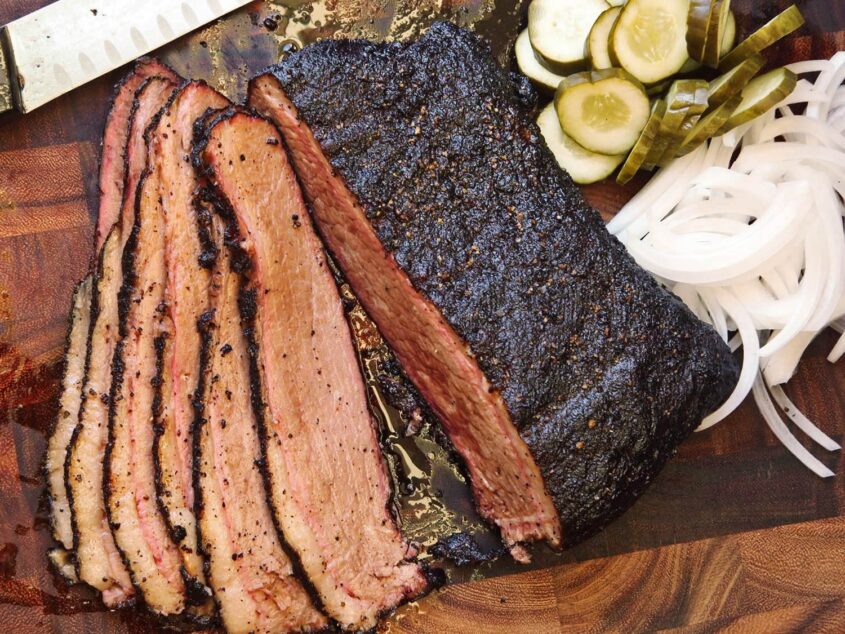
The dish uses cow meat, especially cuts from the front of the cow, meaning that the meat is very tough. This is why it needs to be cooked for hours to become extremely tender.
The dish can be both sweet and savory depending on the rest of the used ingredients. For example, one can cook it with a variety of vegetables and herbs or with some dried apricots and brown sugar.
-
Tahdig
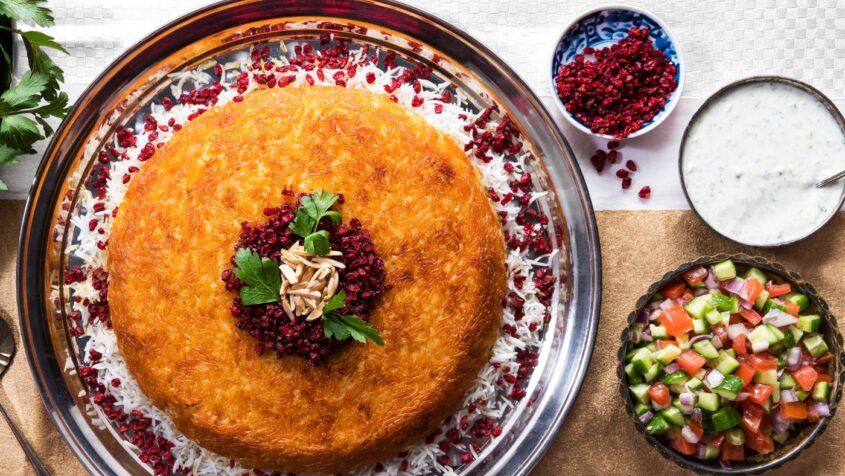
This crunchy dish is essentially a pilaf with a thin crust of scorched rice at the bottom of a pot. The caramelized layer goes well with Persian dishes or stews and can be served as a whole or broken into smaller, golden, and jagged pieces. Other versions include potato, dairy, vegetarian, and bean tahdig.
-
Cholent
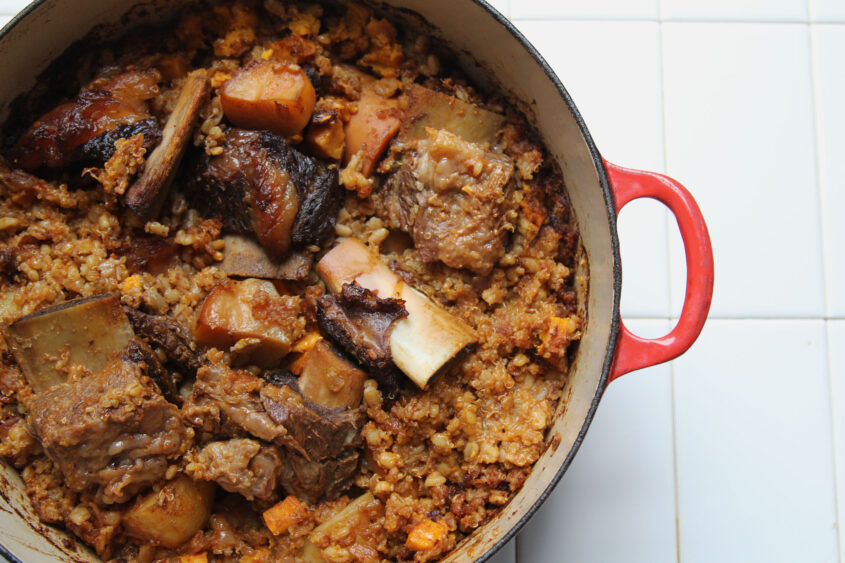
Also known as hamin, this is a traditional Jewish stew that is usually cooked for at least 12 hours if not more and it is a dish that is typically served on Shabbat. It includes the basics such as beef, potatoes, barley, and beans. Depending on people’s preferences, some add chicken instead of beef and rice to replace barley and beans.
-
Israeli Salad
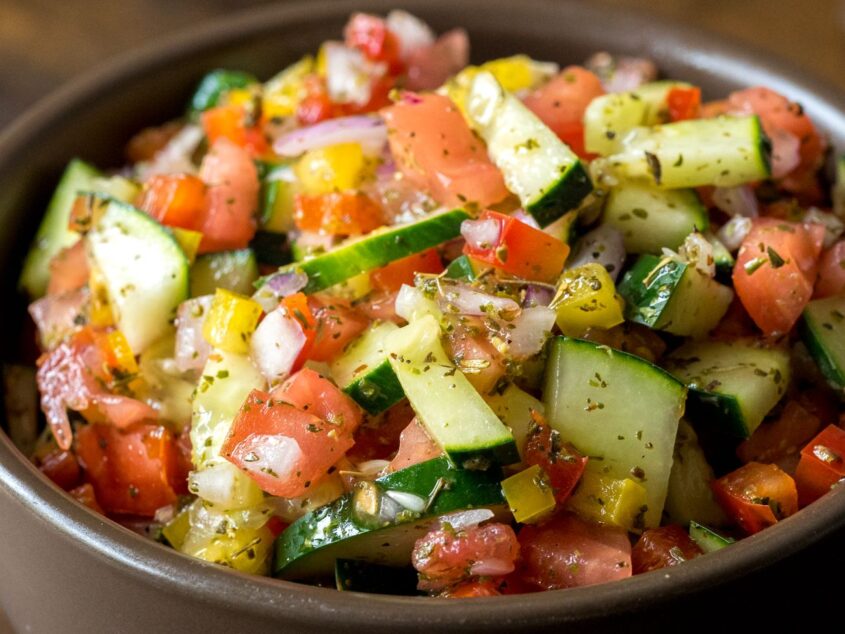
The zesty salad is probably the most well-known Israeli dish and features ingredients such as finely diced tomatoes, bell peppers, cucumbers, onions, parsley, some lemon juice, and olive oil. The salad is extremely light and healthy and can be eaten with numerous other dishes.
Conclusion
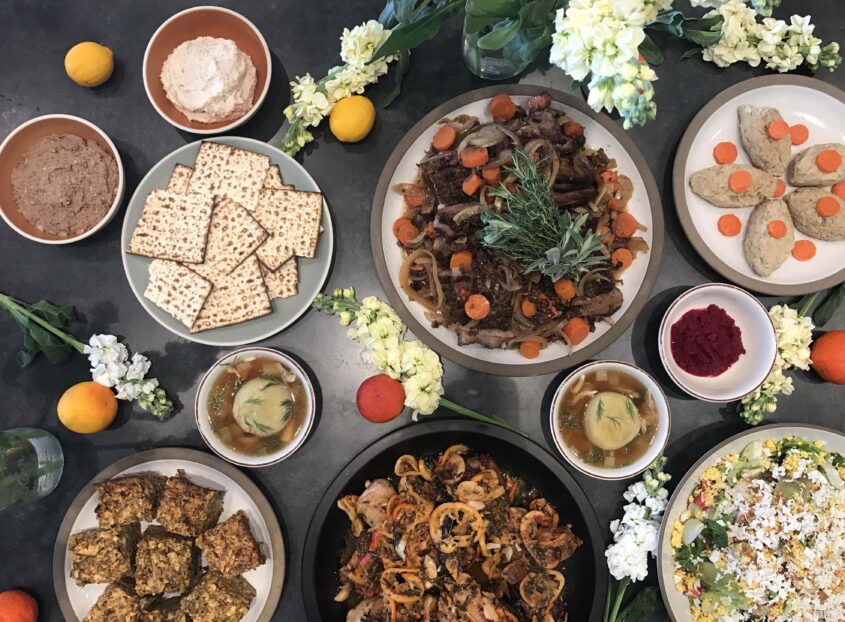
Jewish food is abundant and versatile and people can surely find at least one thing they might like. Lately, the food can be found in many places such as bakeries, specialized restaurants, and numerous cookbooks. Consider trying some of the dishes to discover for yourself just how delicious they can be.


